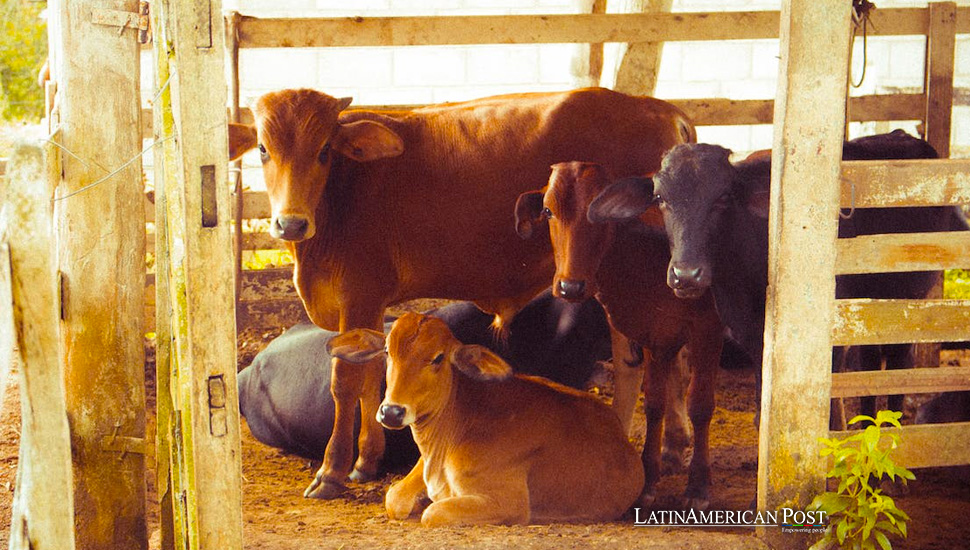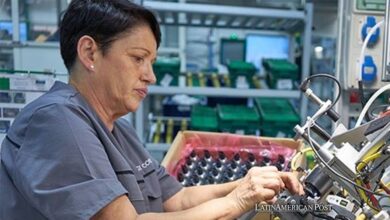Mysterious Cattle Deaths in Mexico Prompt Urgent Agricultural Investigation

After 57 unusual cattle deaths in Mexico’s Hidalgo state, authorities launched an epidemiological study, sparking concerns about livestock safety and regional agricultural practices across Latin America.
Unveiling an Agricultural Mystery
In the scenic but now troubled Valle de Tulancingo in Hidalgo, central Mexico, an unsettling phenomenon has emerged, drawing the attention of the nation’s agricultural guardians. The Ministry of Agriculture and Rural Development (Sader) disclosed that a worrying spate of cattle deaths prompted an immediate epidemiological investigation encompassing nine farms with a total of 85 bovines. This swift response underscores a growing anxiety over livestock health and its implications for the broader agricultural sector in Latin America.
In a concerted effort to unravel this mystery, specialists from the National Service of Health, Safety, and Agro-Food Quality (Senasica), alongside state and municipal authorities, embarked on a fact-finding mission across the municipalities of Acaxochitlán, Acatlán, Agua Blanca, Tulancingo, and Metepec. Their objective: to gather firsthand accounts and evidence of the bovine deaths widely reported on social media.
The investigation revealed that the affected cattle were fed concentrated diets containing pollinaza (chicken manure used as feed), a practice linked to the sudden surge in fatalities. According to interviewed farmers, the 57 deceased animals exhibited symptoms such as prostration, excessive salivation, and decreased production, all ceased once pollinaza was removed from their diet. This pointed to the high concentration of this feed additive as the probable cause of death.
Clinical Inspections and Necropsies
To further probe into these incidents, Sader conducted clinical inspections and necropsies on two bovines, collecting samples for laboratory analysis to pinpoint the exact cause of death. Additionally, veterinarians from the Mexico-United States Commission for the Prevention of Foot-and-Mouth Disease and other Exotic Animal Diseases advised the proper disposal of carcasses to prevent potential health risks.
Samples of the pollinaza-containing feed were sent to the National Reference Center in Animal Parasitology and Analytical Technology (Cenapa) of Senasica for comprehensive testing. These tests aim to detect toxic substances such as organochlorine pesticides, organophosphates, carbamates, pyrethroids, chemical elements, nitrites, nitrates, or urea, which in high concentrations can prove fatal to ruminants and other animal species.
As the investigation progresses, Senasica veterinarians continue identifying additional cases and gathering information to complete their analysis. With the laboratory results, they hope to determine the cause of death and, if necessary, implement appropriate sanitary measures.
Latin American Concerns and Regional Impact
The occurrence in Hidalgo is a stark reminder of the challenges facing livestock management and agricultural practices in Mexico and Latin America. Countries such as Argentina, Brazil, and Colombia, with significant livestock sectors, are keenly observing the situation, understanding that the health of their herds is intrinsically linked to the region’s agricultural sustainability and food security.
The Ministry of Agriculture in Mexico has reiterated its call for the public to prefer foods certified by the Health Ministry or Senasica and urged producers to report any mass animal deaths promptly. This proactive approach aims to rule out the presence of exotic diseases or those with significant zoo-sanitary impact, safeguarding the region’s agricultural heritage and ensuring the safety of its food supply.
Also read: Drought’s Grip on Mexico: A Looming Threat to Agriculture and Inflation Across Latin America
As Latin America grapples with the complexities of modern agriculture, the mysterious cattle deaths in Hidalgo serve as a cautionary tale. They highlight the delicate balance between intensive farming practices and the imperative to protect animal health and ecosystem integrity. The outcome of this investigation could shape future agricultural policies and practices across the region, emphasizing the need for sustainable, safe, and responsible farming to secure the future of food production in Latin America.





